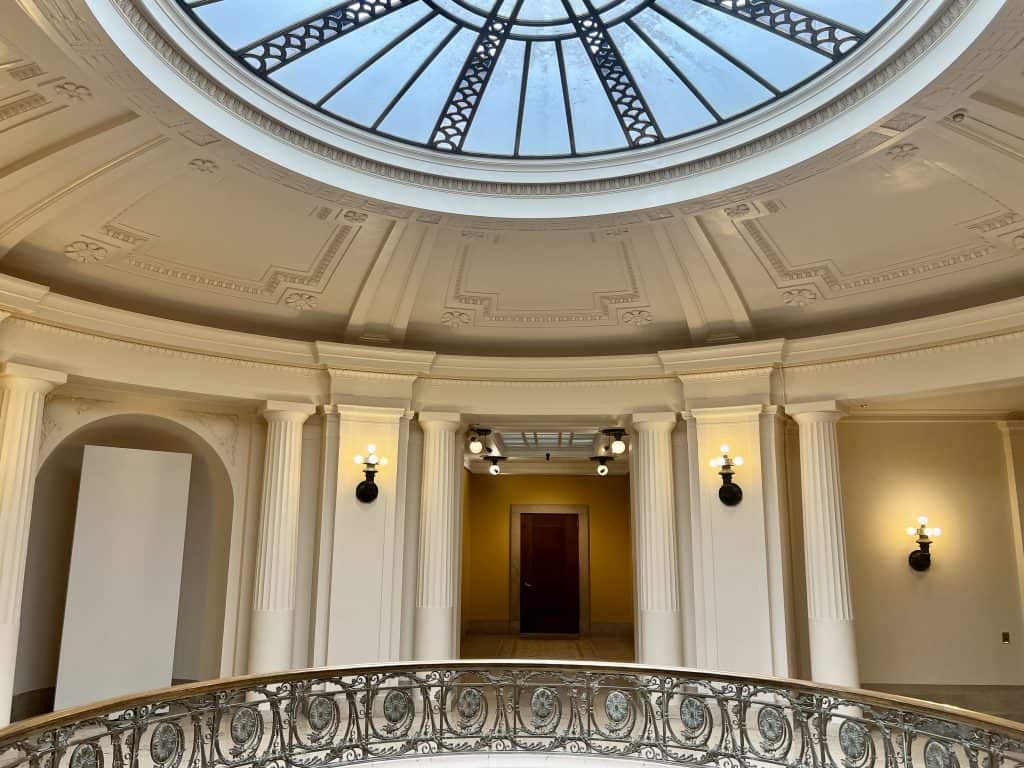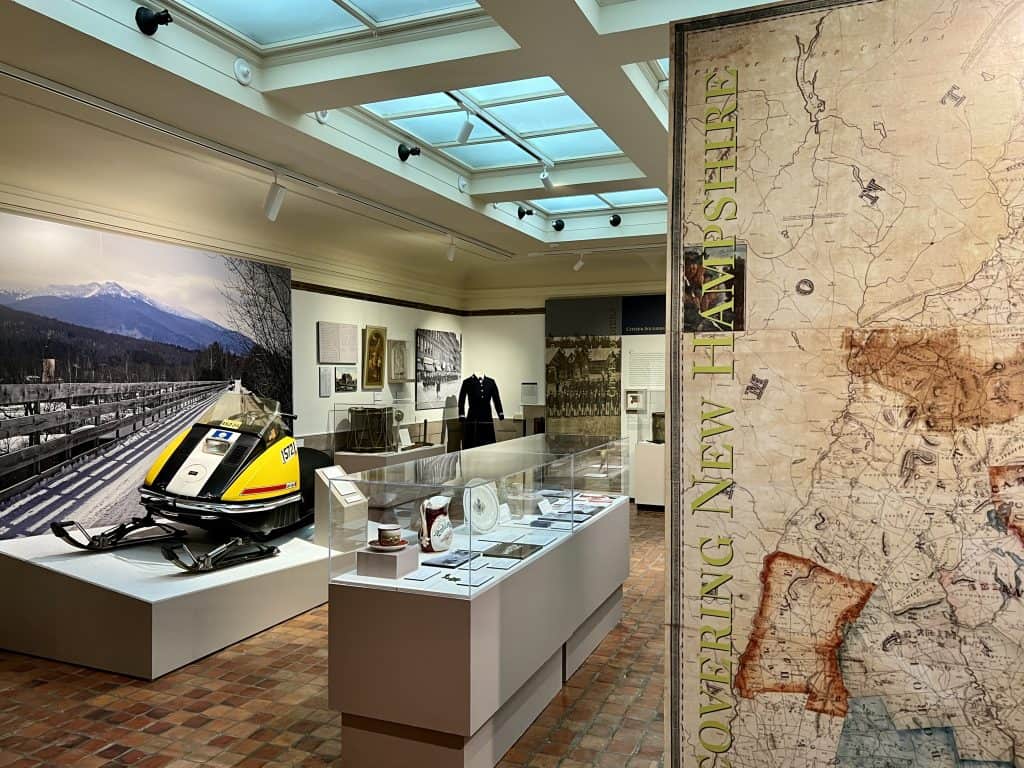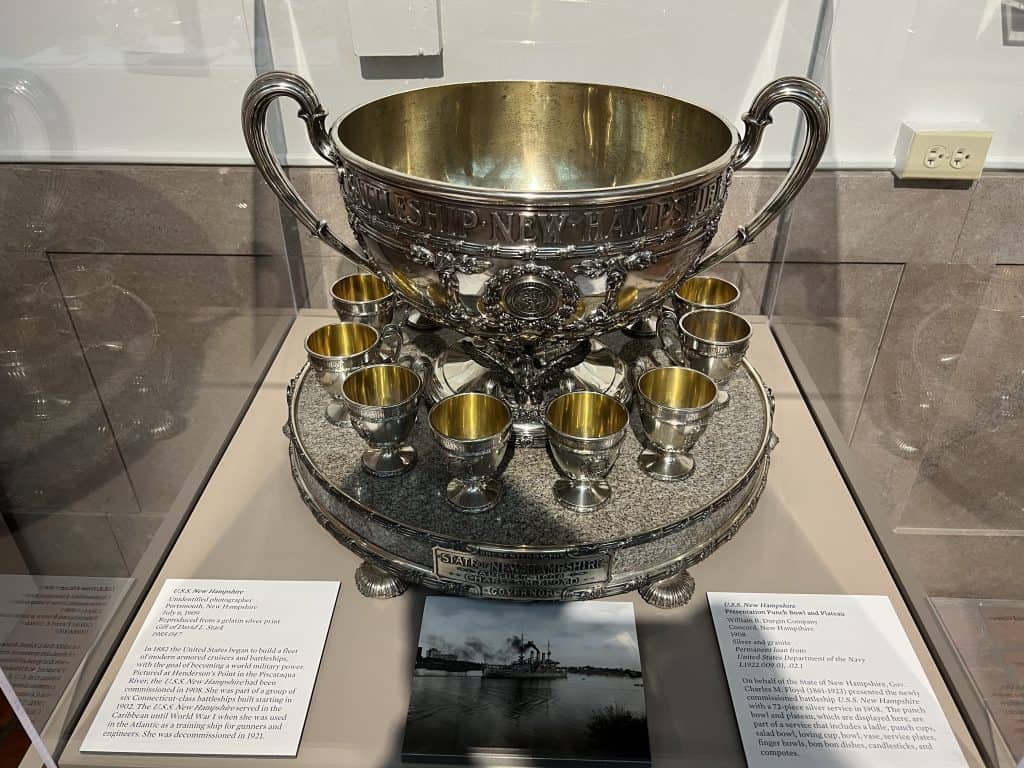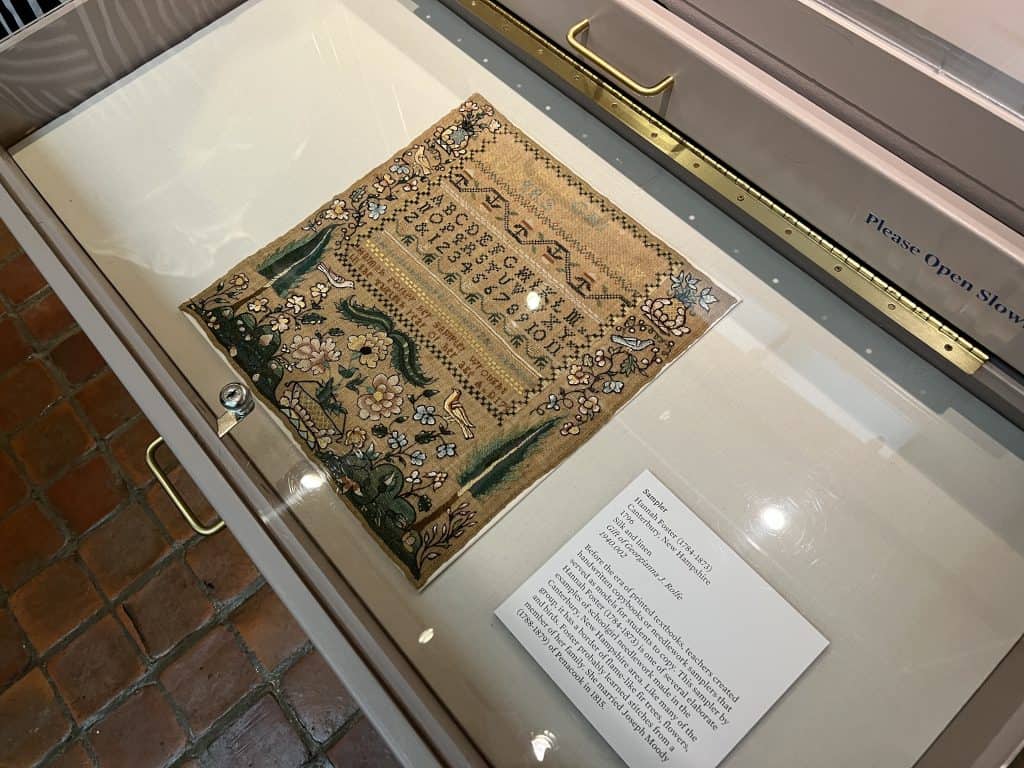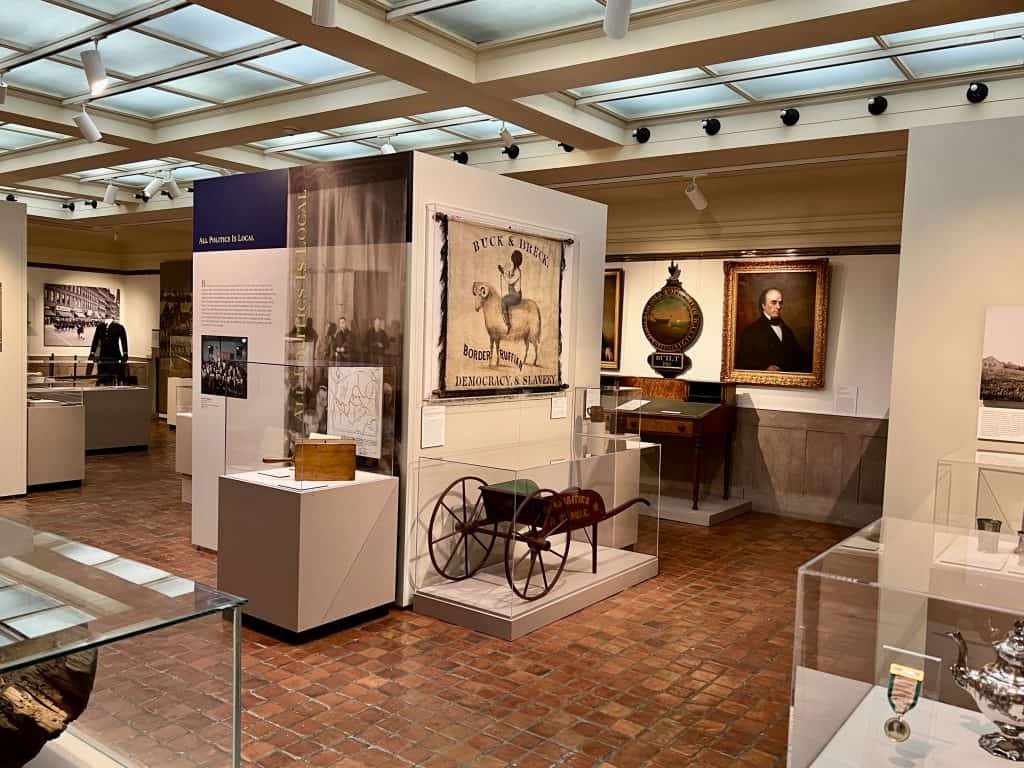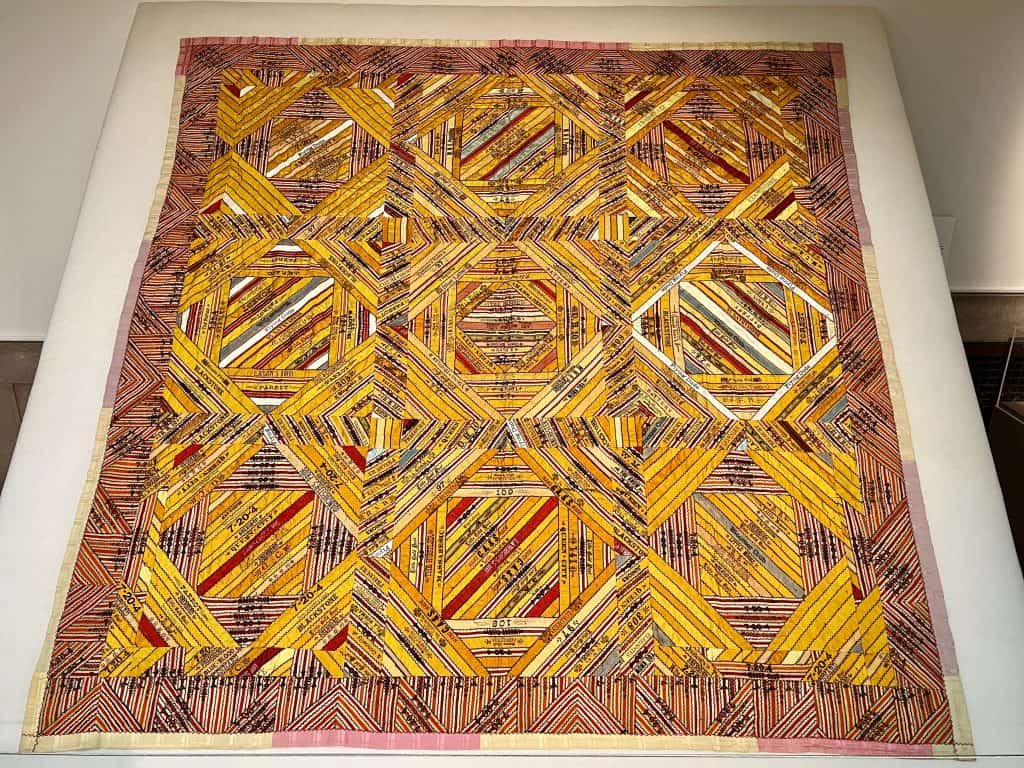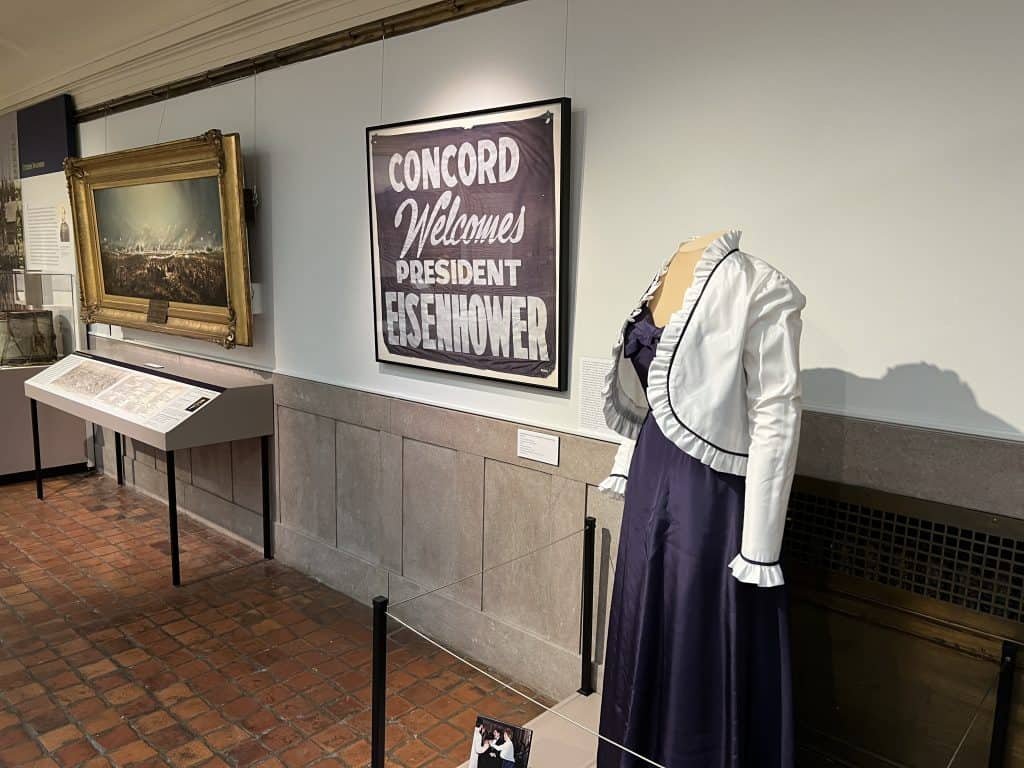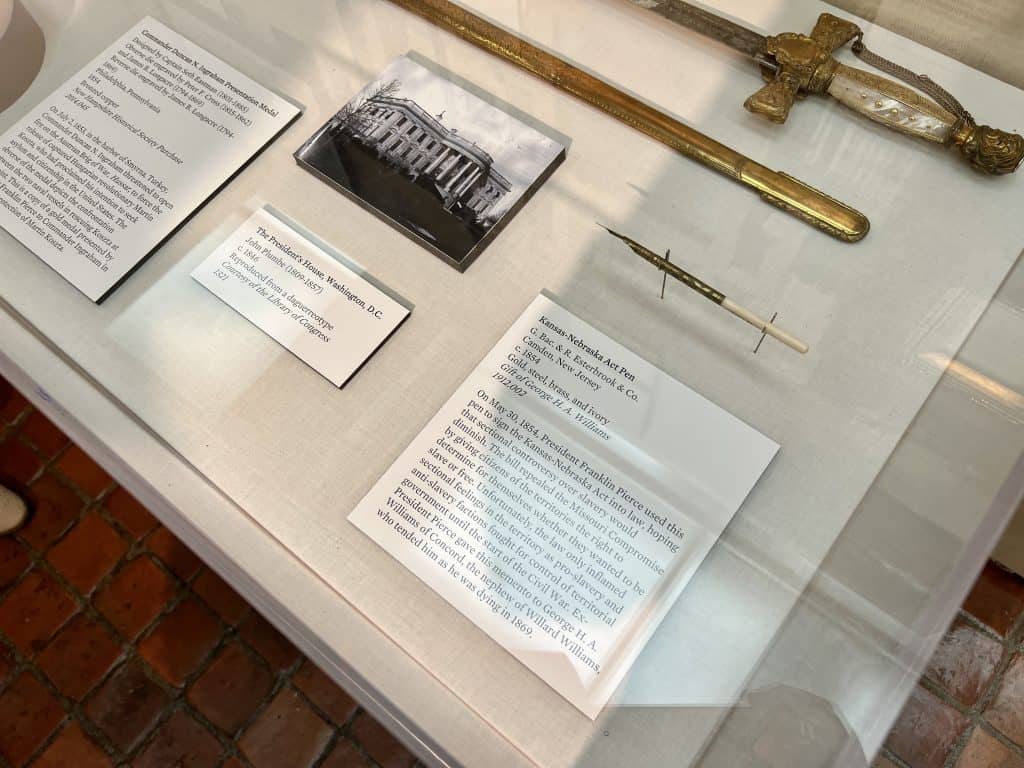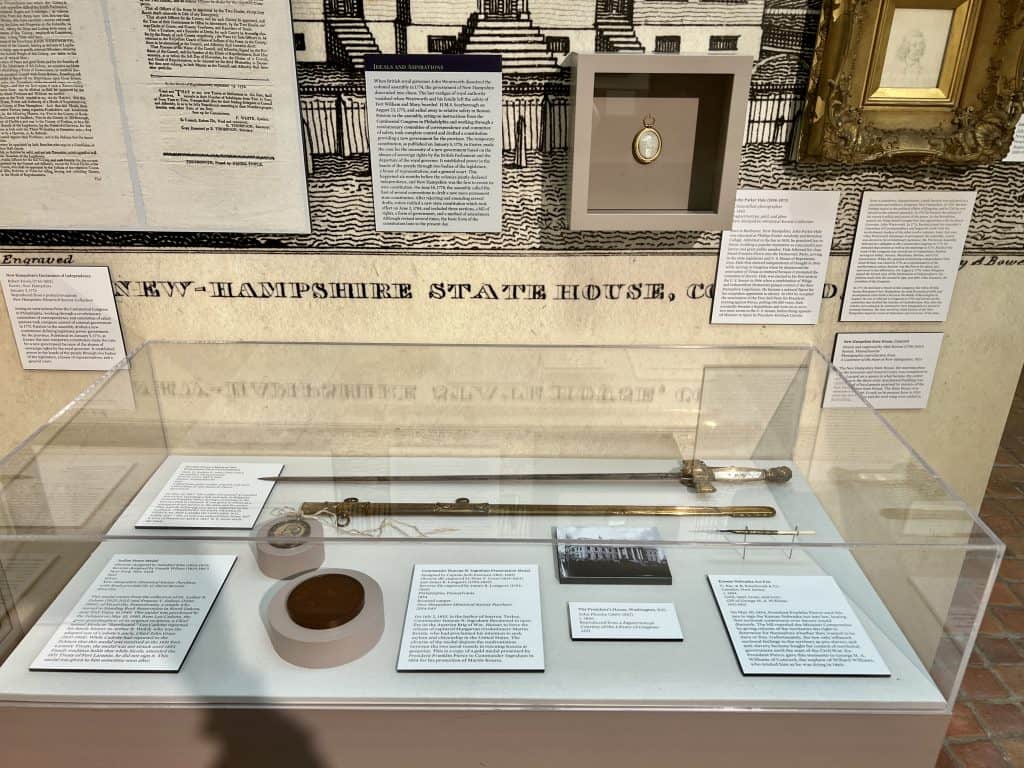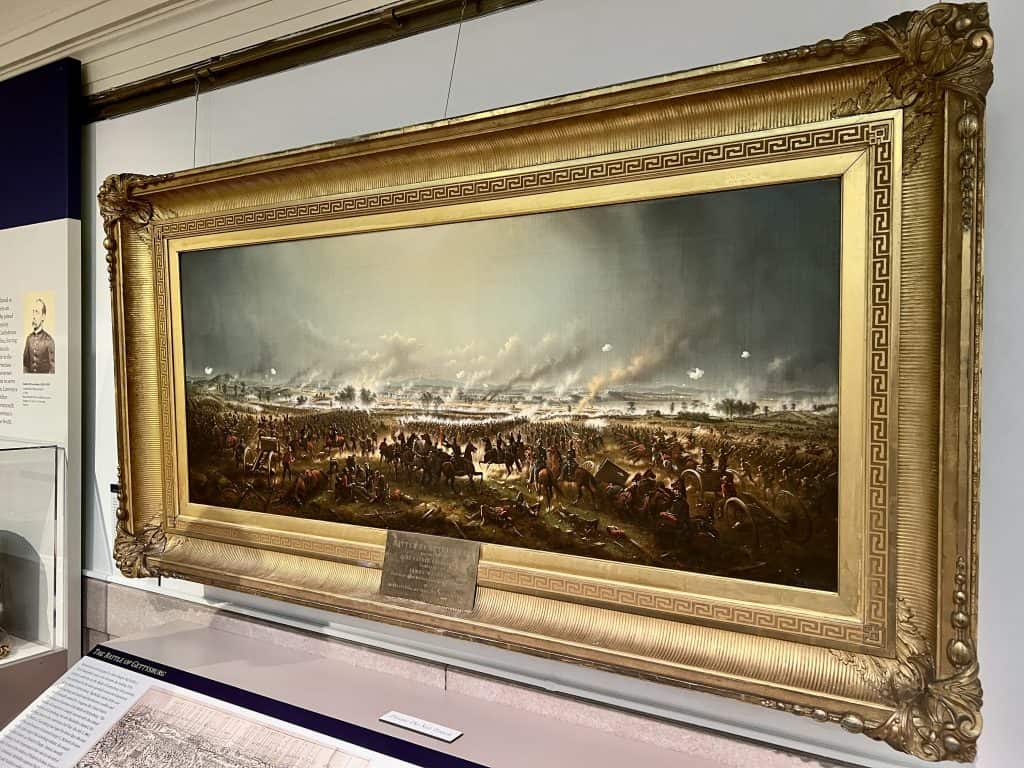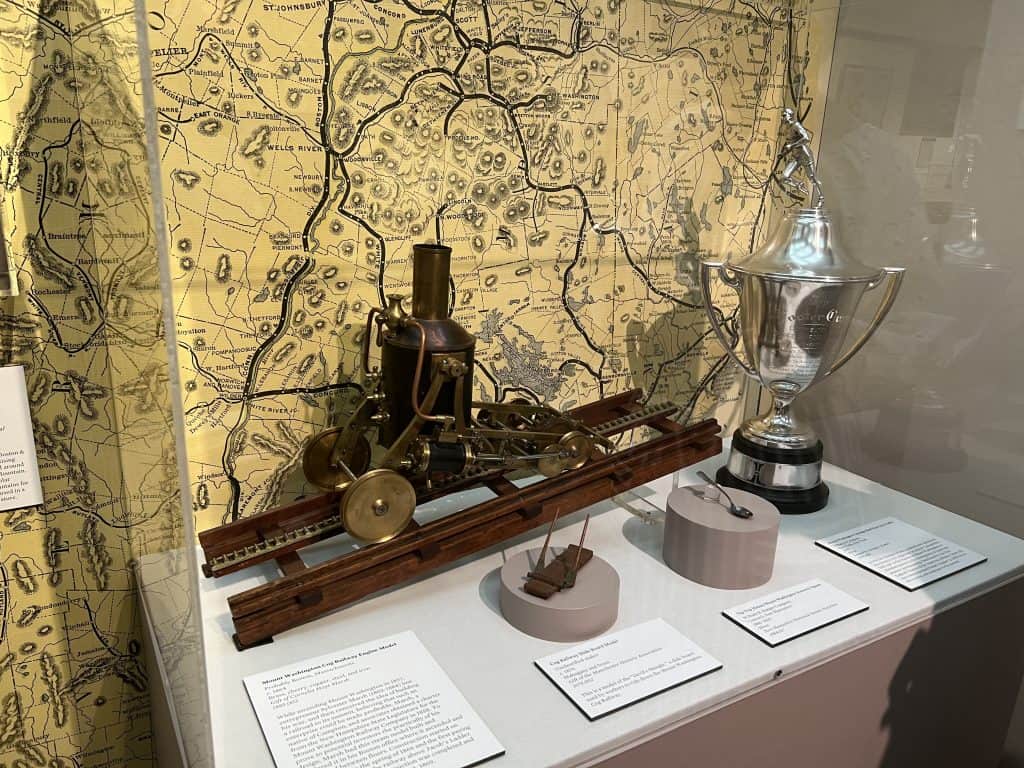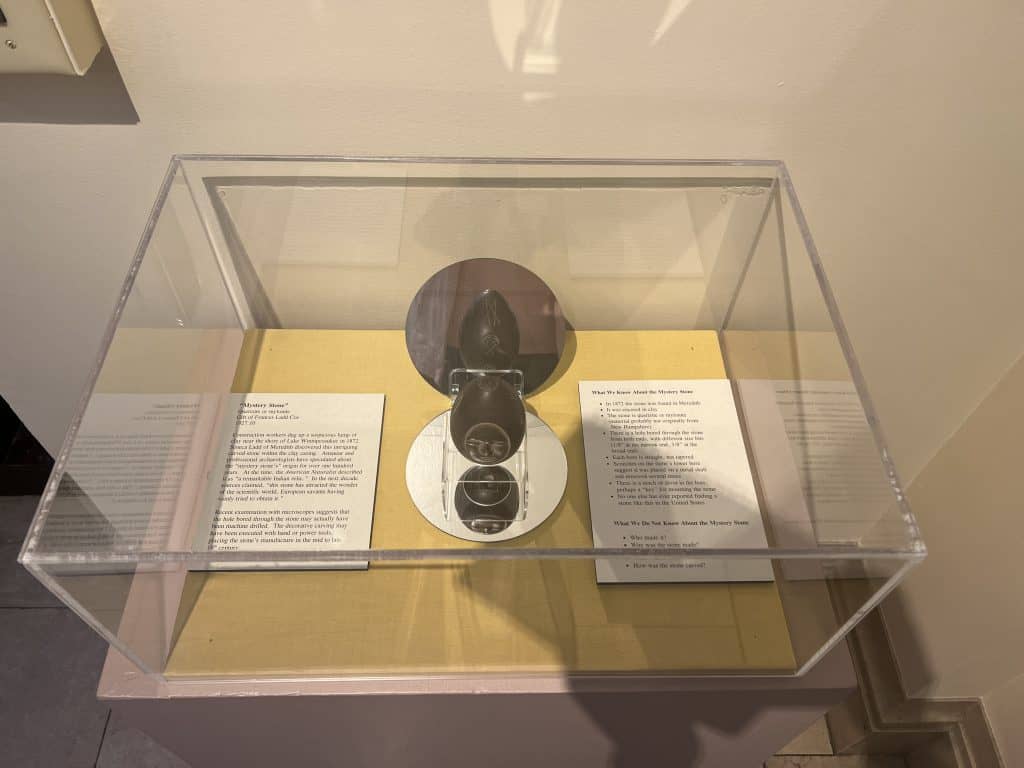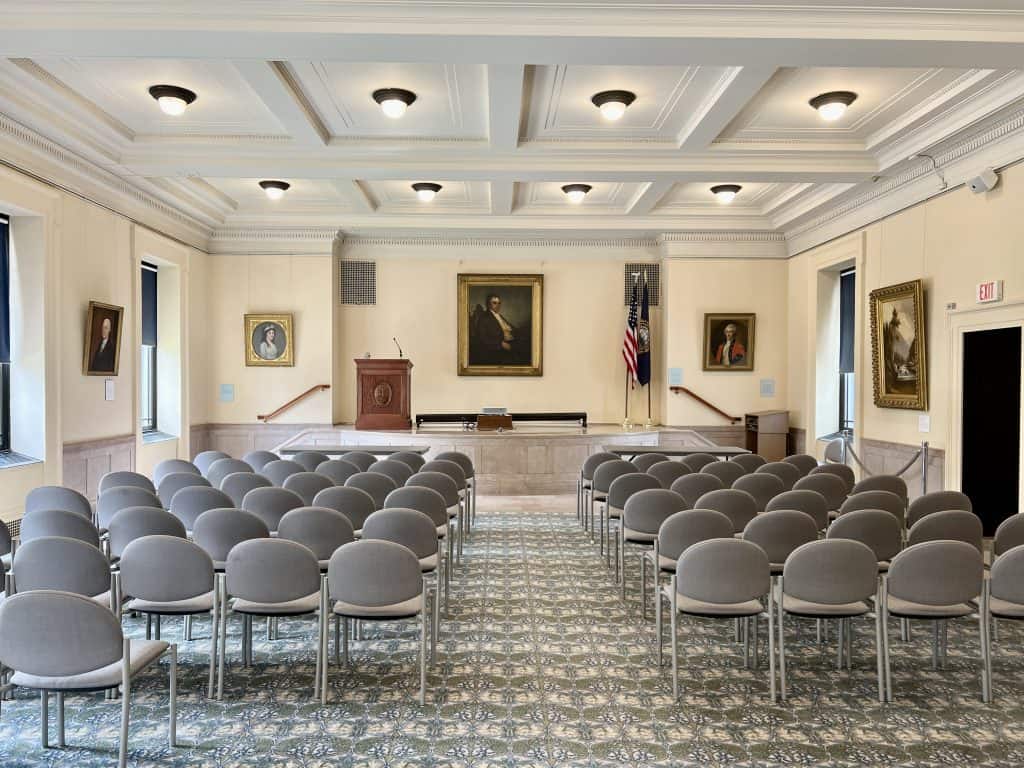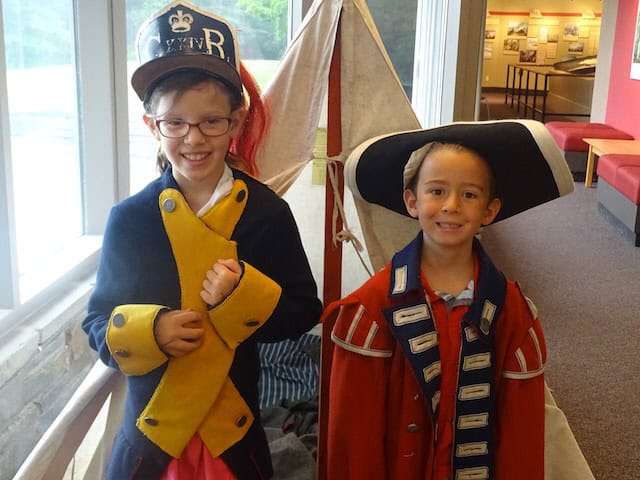Exploring the New Hampshire Historical Society in Concord, NH
While visiting the New Hampshire state capitol of Concord recently, we enjoyed a tour of the New Hampshire Historical Society, which celebrates the rich history of the Granite State.
Celebrating its 200th birthday in 2023, the New Hampshire Historical Society was a gift of Edward Tuck, son of a wealthy businessman who founded the Dartmouth Business School, to the state of New Hampshire. Tuck gave most of his lifetime of fortune back to various charities in New Hampshire and ultimately wanted to build (what he called) a “temple” to the Granite State near the State House. Finished in 1911, the building takes up an entire city block and is diagonal to the State House in downtown Concord. Over the past century, several renovations have been made to the building to make it more energy efficient and accessible for all visitors.
The building was built in a Greek revival style, including the ceiling and walls of the rotunda, which are made of Siena marble from a quarry in Italy that was owned by the monks of the Old Convent and shipped to America. The floors and staircase are made of Hauteville marble from France. Make sure to stand in the middle of the atrium and look up at the Oculus and have children complete our “I Spy” game while touring the exhibits.
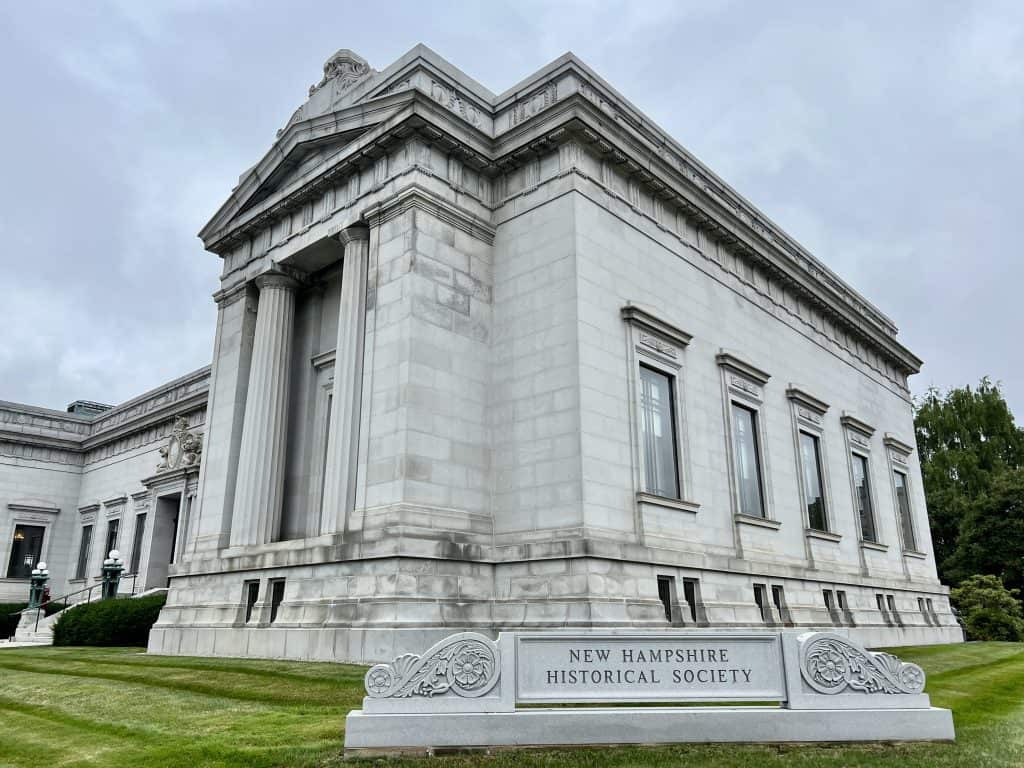
Travel Tips:
Playing “I Spy” at the NH Historical Society:
Would you like to save this?
- The 500 pound eagle, covered in gold, that was displayed on top of the State House from 1818-1957.
- The Revolutionary War flag, the only national flag created by Benjamin Franklin that still exists today.
- The enlarged copy of the Carrigain map of New Hampshire, credited with being the first map that included every town in the state. Former Secretary of State Philip Carrigain finished creating the map in 1816 (he started in 1803!) and also insisted that every selectman walk the entire perimeter of their town every ten years.
- A 500 year old dugout canoe, most likely made by the Abernaki tribe, who lived on the land that is now called New Hampshire for over 12,000 years.
- Some of the 70 pieces to a punch bowl set from the USS New Hampshire battleship. The fancy set was used not by sailors, but by dignitaries who visited the ship when it sailed to England to host parties.
- A sampler sewn by 12 year old Hannah Foster in 1800, displayed by her parents in the family home to entice suitors to marry Hannah. Bonus: see if you can figure out which letter is missing and wasn’t commonly used in the alphabet until the early 1800s.
- A massive quilt made entirely from cigar ribbons. A local cigar ribbon factory employee brought home pieces daily and it took him ten years to complete the quilt.
- The pen President Franklin Pierce used to sign the Kansas- Nebraska Act.
- The oil on canvas painting by James Walker, commissioned by Chief Historian of the Battle at Gettysburg John Badger Bachelder. The painting is so intricate with precise locations of thousands of soldiers and battle figures that there is a key with detailed identifications.
- The drum used by Nathan McGrove, of Concord, in the third regiment in the Civil War.
- The model for the Cog Railway Engine which takes visitors from the western side of Mount Washington to the peak. Visitors can also drive their personal vehicles up the VERY steep Auto Road to the top.
- The most requested item in the Society’s collection: The Mystery Stone! Historians don’t know where it came from, who , or even how old it is.
Bonus: Make sure to peek inside the first floor auditorium to see some of the artwork and the Reading Room Library, which counts over 50,000 books in its collection (and a unique bust of Mary Baker Eddy).
Looking for other adventures in Concord? Check out our post featuring the Canterbury Shaker Village, the Pierce Manse, and the McAuliffe Shepard Discovery Center. And follow along on our adventures on Instagram, Pinterest, Facebook, and Twitter.
Disclosure: Our family was given a media pass to tour the Society; all opinions expressed are my own.



